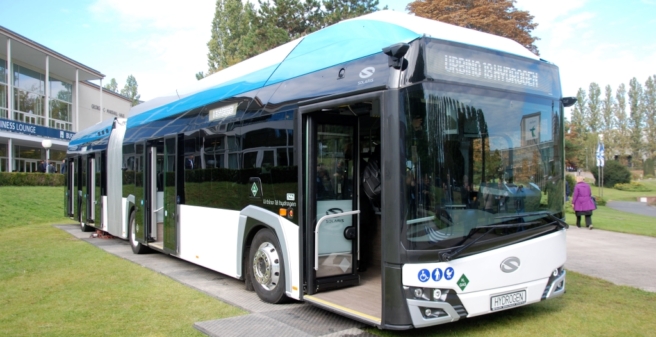
A little bit of Solaris’ history
Solaris is a bus and coach manufacturer from Bolechowo near Poznan in Poland. The company was founded immediately after “reunification” by graduate engineer Krzysztof Olszewski, who had been plant manager at Neoplan’s factory in Berlin and now took the opportunity to return to his home country. He bought a former military site and immediately began to build buses under licence from his previous employer under the brand name “Neoplan Polska”. He was also very quickly successful with them on the Polish market, with many “Neoplan Polska” going to Bolechowo’s neighbouring city of Poznan in particular.
At the industrial trade fair in Poznan at the beginning of 1996, the young bus builder presented his first own “child”. Under the “sunny” brand name “Solaris”, the company presented a 12-metre-long low-floor bus, which was given the type name “Urbino 12”. From “urbs” (Latin) = city, the 12 indicated (and still indicates) the length in metres. This first model is still preserved in the factory museum, now lovingly restored, and the author had the pleasure of driving the car himself in 2016 at the brand’s twentieth anniversary (his wife was there as a “passenger”). The relatively soft-sprung car ran lively.
The founding Olszewski family sold the company to the Spanish company CAF (Construcciones y Auxiliar de Ferrocarriles). CAF is very successful in the construction of railway vehicles, and they also wanted to enter the bus market.
Solaris was very successful very quickly with its new bus, and this was soon followed by buses in other lengths (such as 8.5 metres – somewhat narrower and under the type name “Alpino – but also 9, 10, 13 and 15 metres as well as articulated buses in 18 and 18.75 metres. Solaris also very quickly launched its bus as a trolleybus, replacing the type name Urbino with “Trollino” (from trolleybus).
Alternative drives – battery-electric buses
Krzysztof Olszewski realised early on that the bus of the future would no longer run on diesel, but on electricity. So, more than 15 years ago, he began developing a bus that uses electricity from batteries as its drive energy. Relatively early examples with this drive technology delivered by Solaris were buses no. 1401 and 1412 to 1415, built in 2014 for Braunschweig’s BSVG. They were on the streets of Braunschweig at a time when the author was still hearing from other bus manufacturers: “We have such good diesel buses, we don’t need anything like electric buses.” The battery buses from Solaris have names such as “Solaris Urbino 12 electric” or “Urbino 18 electric”.
The hydrogen bus
The latest addition to the Solaris bus family is the “hydrogen bus”; the bus manufacturer from Bolechowo delivered the first vehicles with this drive technology back in 2019. The hydrogen bus does not refuel with diesel or charge its batteries with electricity, but instead runs on hydrogen. This flows from the pressurised cylinders, which form the hydrogen tank, into a fuel cell in which the hydrogen reacts with the oxygen in the air. This produces electricity, which is fed to the bus’s electric traction motors.
Although hydrogen technology is still relatively new, Solaris was also one of the pioneers here, being the first to offer this drive technology. As befits a new technology, many customers waited to see if it would work. Regionalverkehr Köln from the greater Cologne/Bonn area, which currently operates Europe’s largest fleet of hydrogen buses (“Solaris Urbino 12 hydrogen”), acted as an “icebreaker” and thus ensured that others could see that such a thing can actually be used with good success! The advantage of the hydrogen bus is that its purchase price is comparable to that of the battery bus, but it has a significantly greater range and takes about as long to refuel as a diesel bus – and not a few hours like a battery bus. One question arises, however: where do you get the hydrogen fuel from? If it is already available, everything is just as good as it is cheap; if you have to produce the hydrogen by electrolysis first, it becomes more complicated and also more expensive. Ideally, there is a chemical factory near the bus depot where hydrogen is normally produced as waste (!) and nothing can be done with it. It can then be used sensibly as a fuel for buses and does not have to be wasted.
Solaris hydrogen buses already in use in Germany today
Solaris hydrogen buses are already in regular service in Germany today. They are in operation at Geldhauser in Brunnthal (south-east of Munich), Winzenhöler in the greater Frankfurt/Rhine-Main area, Regionalverkehr Köln in the greater Cologne/Bonn area, Verkehrsbetrieb Weimar and Wuppertaler Stadtwerke (WSW) (in alphabetical order of location). Regionalverkehr Köln and Wuppertals WSW have already repeatedly purchased hydrogen buses and are therefore clearly satisfied with this drive technology. Wuppertal’s WSW currently owns 20 hydrogen buses, while Regionalverkehr Köln will have over 100 by the spring of this year.
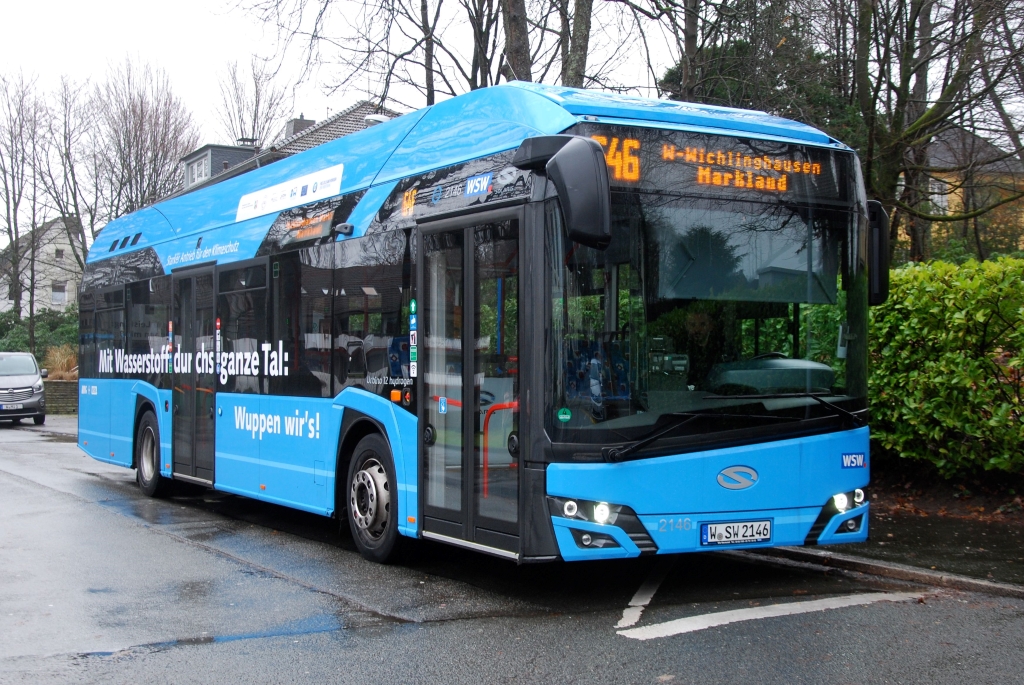
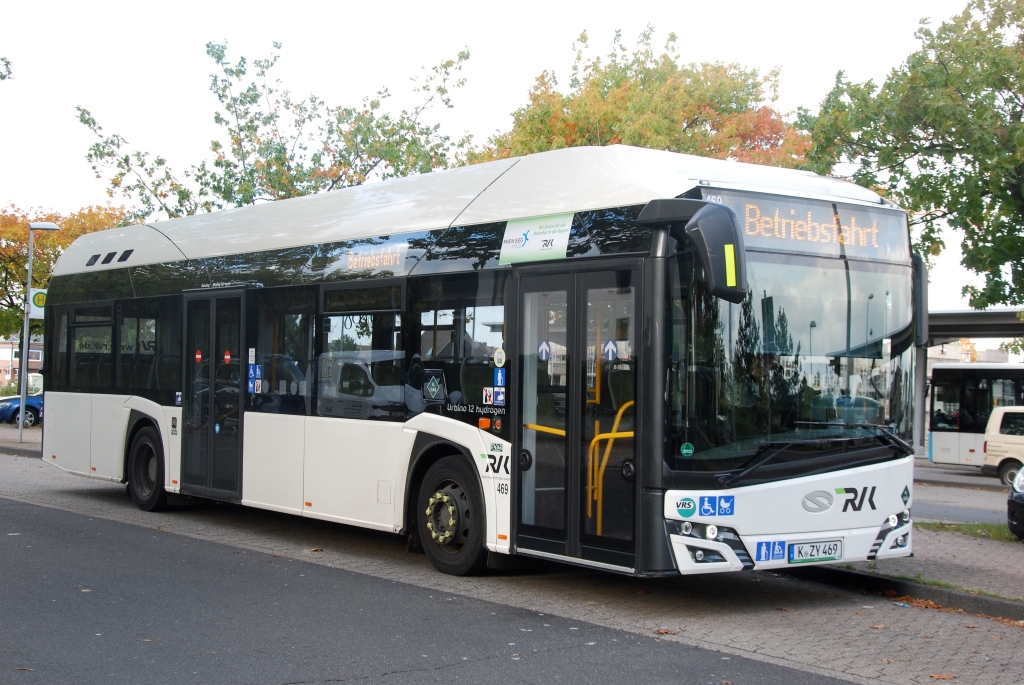
Hydrogen buses ordered from Solaris for Germany
The numbers of hydrogen buses ordered are much more impressive. Stadtwerke Aschaffenburg is expecting 12 Solaris hydrogen buses (10 rigid and 2 articulated vehicles), Rheinbahn from Düsseldorf 10 vehicles, Duisburg’s DVG also 10 vehicles, Essen’s Ruhrbahn the 19 hydrogen buses discussed here (9 solo and 10 articulated vehicles) and Krefeld’s SWK also 10 vehicles. Further hydrogen buses have been ordered by Lokale Nahverkehrsgesellschaft mbH Kreis Groß-Gerau (LNVG) from Gross Gerau (23, thereof 8 articulated), 52 (incl. 5 articulated) by REBUS from Güstrow in Mecklenburg-Western Pomerania and 5 by Hamburger Hochbahn. 18 articulated hydrogen buses are on order for RBK Cologne.
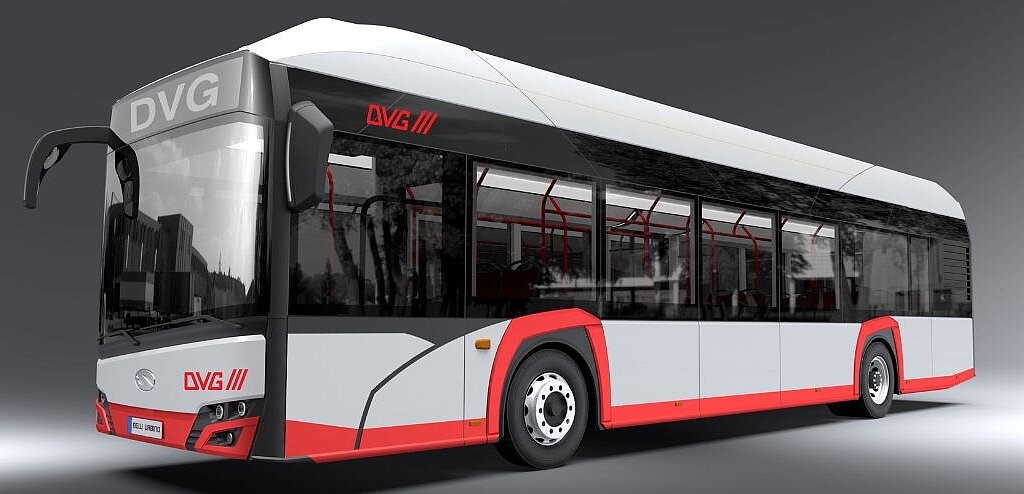
Since Solaris began building and delivering hydrogen-powered buses, the order books in Bolechowo have already recorded more than 710 vehicles with this technology for Europe. Around 200 of them are already in daily service today (a large group of them with Regionalverkehr Köln), but in 2023 Solaris signed a purchase agreement for 130 12-metre buses with TPER (Trasporti Pubblicci Emilia Romagna) in Bologna, Italy. This is the largest order for Solaris hydrogen buses to date. “Azienda Veneziana della Mobilitá” has also ordered 90 Urbino hydrogen buses, 75 solo and 15 articulated vehicles.
In total, Bolechowo has currently received orders for hydrogen buses from Germany, France, Italy, the Netherlands, Austria, Poland, Switzerland, Sweden, Slovakia and Spain,
530 hydrogen buses are currently under construction at the plant or are waiting for construction to begin.
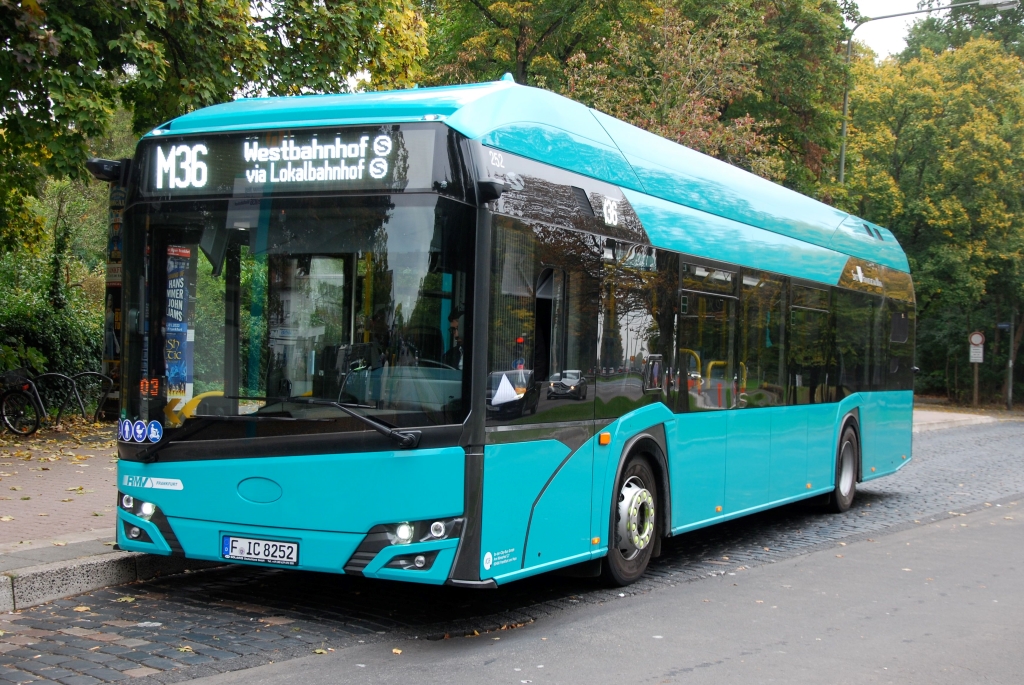
The buses for the Ruhrbahn in detail
Some time ago, Ruhrbahn, the joint transport company of the two neighbouring cities of Essen and Mülheim, decided to only use hydrogen-powered buses from 2033. A perfectly understandable decision in view of the fact that hydrogen can easily be obtained from the chemical industry in the Ruhr region. (Bielefeld’s moBiel also refuels its fuel cell buses with hydrogen, which it has brought in from the Ruhr region).
To date, the Ruhrbahn bus company has only used diesel buses – alternative drive systems are still completely unknown here. Well, they did have a look at a battery-electric articulated bus from the Spanish manufacturer Irizar …
If the 2033 target is to be reached, it is high time to start purchasing hydrogen buses. The Ruhrbahn probably thought so too, as it has just ordered 19 such vehicles from Solaris, nine “Urbino 12 hydrogen” vehicles and ten “Urbino 18 hydrogen” articulated vehicles, which are to be delivered from the end of 2024 and in 2025. Solaris proudly points out: “This is the first order we have received from Essen and Mülheim.” Olivier Michard, Solaris Board Member for Sales and Marketing, says: “Ruhrbahn and Solaris together are taking an important step towards an environmentally friendly future. And we are encouraging people to embrace technology and ecology.”
The 12-metre buses will have a fuel cell with an output of 70 kW, while the articulated buses will have one with an output of 100 kW. They will all be powered by a central electric motor. And to support the fuel cell during heavy use, they store electricity in “Solaris High Power Batteries”.
There will be various driver assistance systems to ensure the safety of passengers and drivers. Solaris draws particular attention to the Brake Assist and Turn Assist systems. They will also be equipped with “eSConnect”, a system developed by Solaris itself that allows the technical well-being of the vehicle to be constantly monitored (also from the control centre and workshop). The buses’ air conditioning systems will work with heat pumps and use CO2 as a coolant. And there will be USB plugs for passengers,
Finally, Solaris points out that not only is interest in hydrogen as a drive energy for buses constantly increasing – also and especially in Germany – but that the number of hydrogen buses is also growing.
More reports about Solaris hydrogen buses:
https://www.urban-transport-magazine.com/en/40-solaris-hydrogen-buses-for-bratislava/
https://www.urban-transport-magazine.com/en/52-solaris-hydrogen-buses-for-rebus-in-gustrow/

